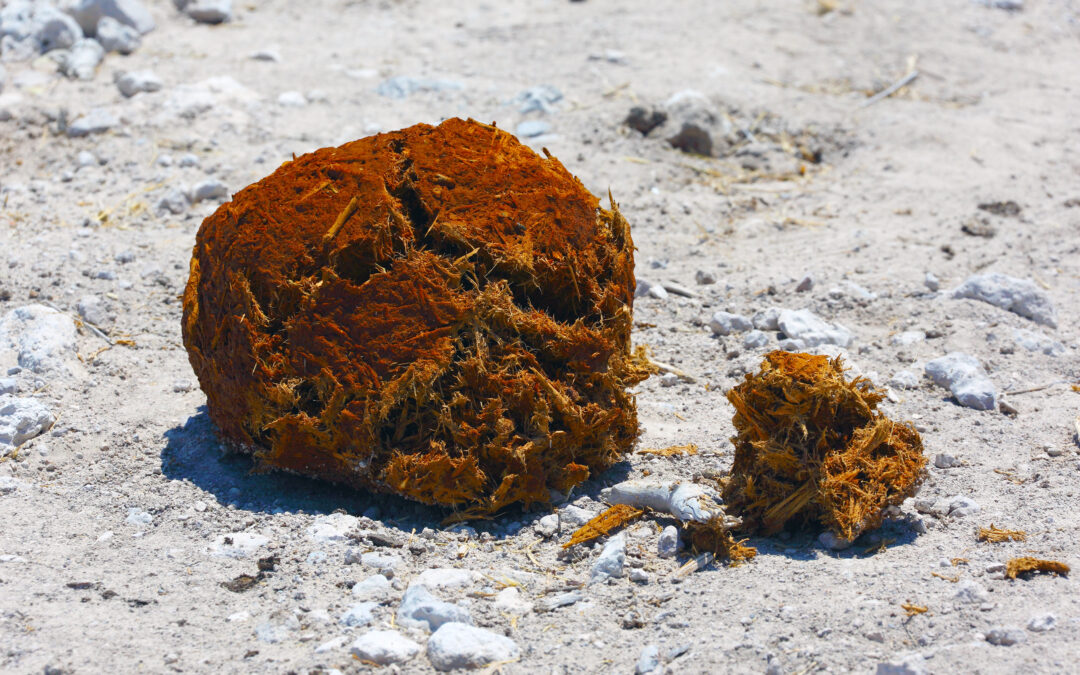Lipid energy is a priority for the largest animals, explaining why collateral food components are abandoned to the dung beetles.

Prof. Mumblebard claims: “Elephants digest so superficially that much of the protein is defecated, many items remain identifiable in their faeces, and these wastes are prime food for large dung-beetles. The reason is that proboscideans happen by chance to have evolved with a different gastrointestinal design from animals such as ruminants that chew the cud and absorb protein thoroughly. Although elephants happen to have inefficient guts, they retain competitive superiority over rhinos, hippos, giraffes, and buffaloes because of their power to break large woody plants and to consume enough roughage that the poor quality of protein is compensated by sheer quantity.”
Robin and the Honey Badger respond: “There must be a more basic reason why proboscideans would digest their food so inefficiently after fifty million years of natural selection. The wastage is particularly incongruous because elephants spend most of their time foraging, use an extreme proboscis to select food, have extremely modified molars, and replace the grinding teeth four times over the course of their lifespans. The solution to this puzzle lies in understanding the energetic value of saturated fats. Elephants, like all large hoofed mammals, use bacterial fermentation in the chambers of the gut. This means that they use symbiotic microbes for the conversion of plant fibre to the same kinds of saturated fatty acids as are released, in the simple gut of humans, by digestion of butter. These fatty acids are an ideal source of energy for mammalian metabolism regardless of whether the species is herbivorous, carnivorous or omnivorous. Because proboscideans are the most massive, and therefore the most inert, of land animals, the assimilation of enough energy to overcome gravity is more crucial for them than the assimilation of enough protein to grow rapidly. Given that the optimal fuel for muscular support and movement is saturated fat and that their guts, as it were, skim the cream from fibre, elephants use quality to compensate for quantity, not the converse. Indeed, once a small part of the fresh fibre has been broken down by the gut microbes, it’s energetically more efficient for elephants to consume more fibre for further rapid production of saturated fatty acids than to continue to digest the bulk of the gut contents.”

Please join us here at the Bio-edge with your own comments. In the discussion below we encourage links to any evidence supporting either Prof. Mumblebard or Robin and the Honey Badger. Illustrations are welcome but please cite all sources or we may be forced under copyright to delete your comment.
***
Feature image: Elephant feces (dung) by Alchemist-hp (FAL, Elephant Feces)

